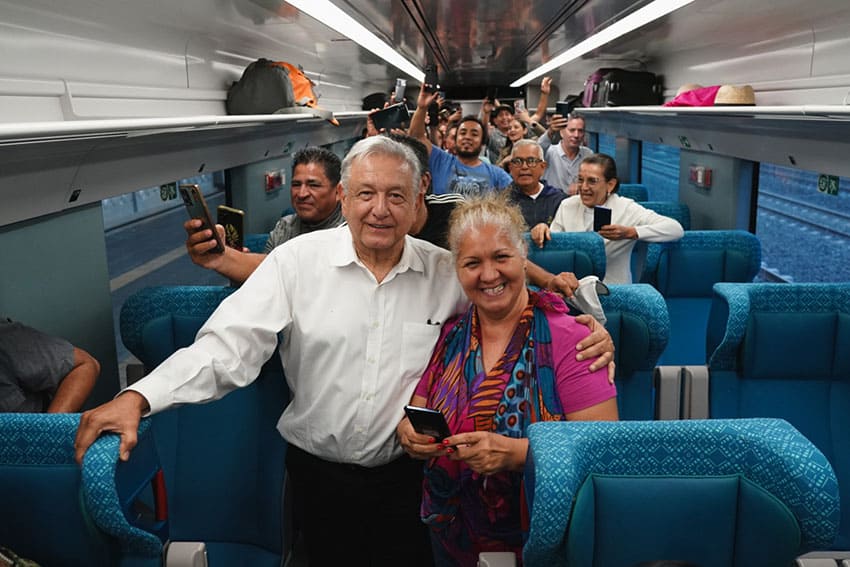The federal government has once again pushed back the scheduled completion date for the Maya Train railroad: it will now be fully operational in September, President Andrés Manuel López Obrador said Monday.
Sections 1–4 of the 1,554-kilometer-long railroad — which link Palenque, Chiapas, to Cancún, Quintana Roo, via Tabasco, Campeche and Yucatán — are already open, as is the northern part of Section 5, which connects Cancún to Playa del Carmen.

However, trains have not yet started running on the southern part of Section 5 between Playa del Carmen and Tulum, or on Sections 6 and 7, which will link Tulum to Escárcega, Campeche, and include stations at Bacalar and Chetumal.
López Obrador said Monday that the construction of a cable-stayed bridge will delay the opening of Tramo 5 Sur, as the southern part of Section 5 is known.
“We already inaugurated [the section] from Cancún to Playa, … but we can’t connect to Tulum because of the cable-stayed bridge, which will take time. We think we’ll finish it at the end of August,” he told reporters at his morning press conference.
López Obrador acknowledged that steel and cement pilings pierced through the roof of a limestone cave during construction of a section of Tramo 5 Sur and said that authorities are “repairing everything and resolving the problem.”
As a result of the damage caused by the pilings, a decision was taken to build a cable-stayed bridge with a span of 200 meters in order to avoid damage to caves, cenotes (water-filled sinkholes) and subterranean rivers, the president said, although he previously announced such a bridge in January 2023.
“In other words, we’re not going to install columns, … it’s going to be a cable-stayed bridge, and this means a delay. … We could have drilled and installed piles, but we said, ‘No, we’re going to look after this area,’ and that’s why [we’re building] the bridge,” López Obrador said.

He said that the entire railroad — including “all the stations” and train sheds and workshops — will be completely finished by September, his final month in office before a new president is sworn in on Oct. 1.
Late last year, López Obrador said that the railroad, an approximately 500-billion-peso (US $29.5 billion) project, would be completed by the end of February. However, he conceded in January that that wouldn’t be the case, predicting at the time that the railroad would be 100% complete in “another two or three months,” or by the end of April.
López Obrador has said on repeated occasions that the construction and operation of the Maya Train railroad will help generate economic prosperity and well-being in the five states through which it runs. It connects cities and towns in Tabasco, Campeche, Yucatán, Quintana Roo and Chiapas, giving passengers access to less-visited parts of Mexico’s southeast.
The president believes that many tourists who fly into Cancún will use the train to head to inland destinations on the Yucatán Peninsula — an area with numerous archaeological sites, pretty colonial cities such as Valladolid and Izamal in Yucatán and plentiful cenotes, among other attractions.
However, it remains to be seen how much long-term demand there will be for tourist services on the railroad, which is also set to be used by freight trains at some point in the future.
With reports from La Jornada and Reforma
